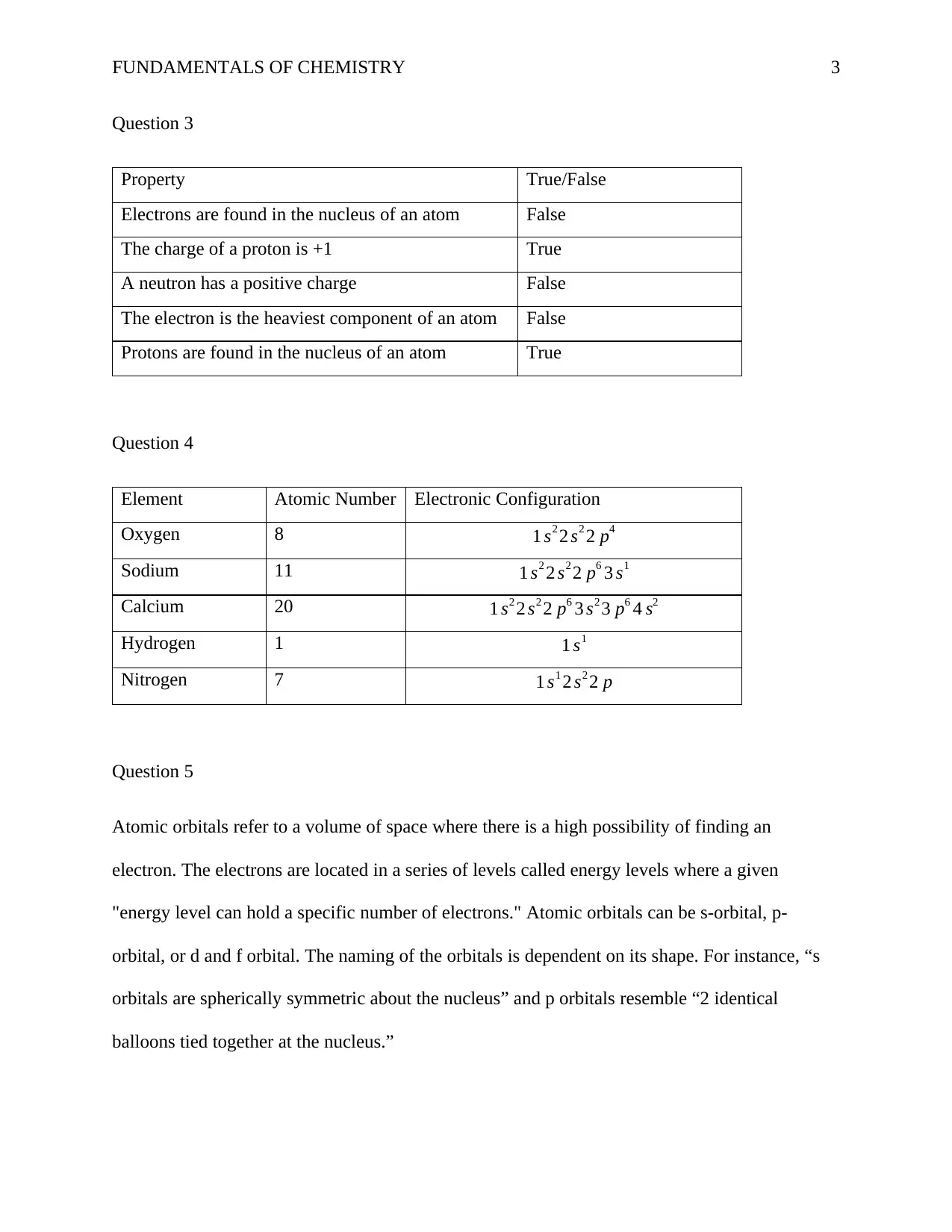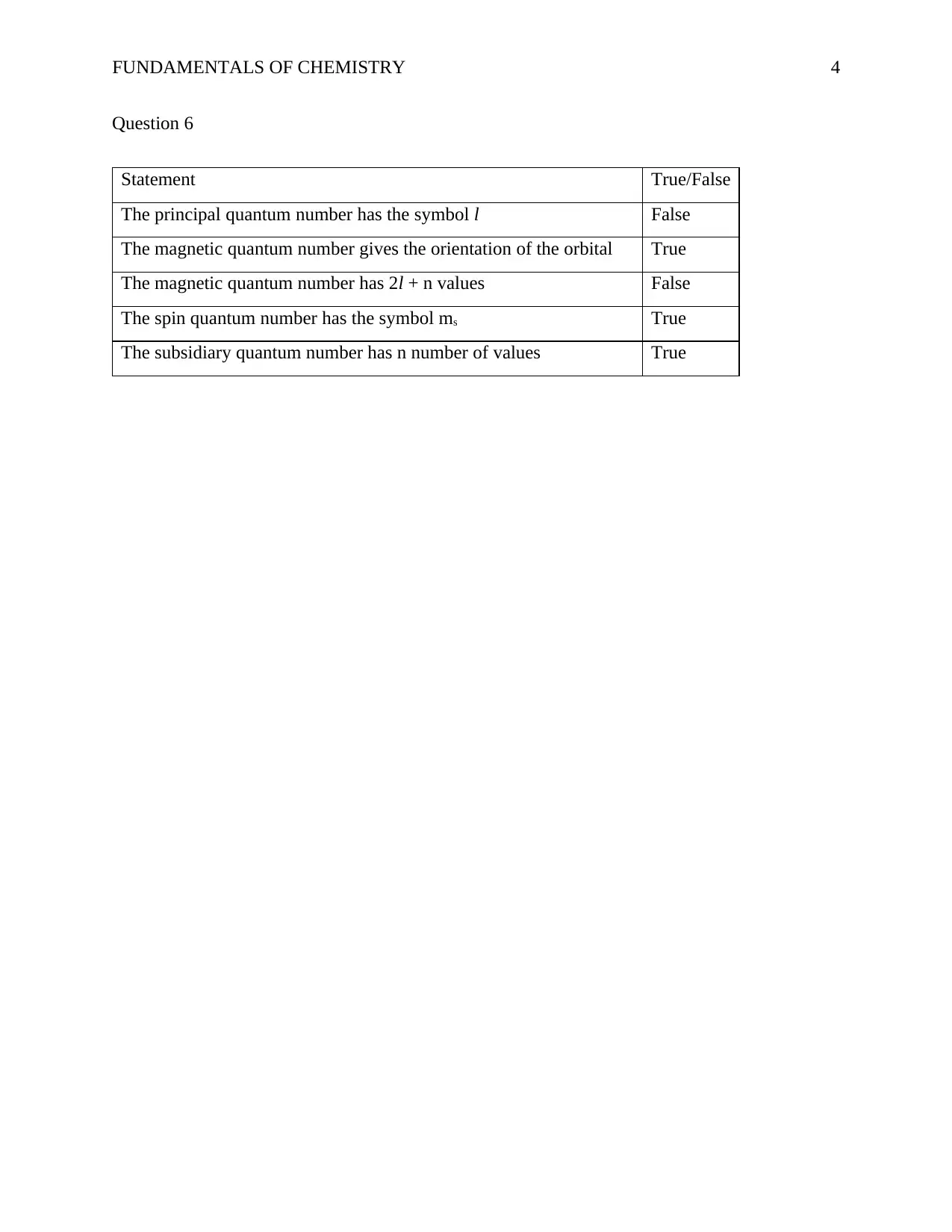VOMP3003 - Chemistry Fundamentals: Atomic Structure and Properties
VerifiedAdded on 2023/06/15
|4
|520
|465
Homework Assignment
AI Summary
This assignment provides a comprehensive overview of fundamental chemistry concepts. It begins by defining matter and its physical and chemical properties, highlighting the role of atoms as fundamental particles. The assignment differentiates between pure substances (elements and compounds) and mixtures, also describing the three physical states of matter and state changes. It further explains the differences between atoms and elements, as well as molecules and compounds. The assignment includes true/false questions to assess understanding of atomic structure, including the location and charge of electrons, protons, and neutrons. Electronic configurations are provided for oxygen, sodium, calcium, hydrogen, and nitrogen. The concept of atomic orbitals, energy levels, and the shapes of s and p orbitals are discussed. Finally, the assignment includes true/false questions related to quantum numbers, including principal, magnetic, spin, and subsidiary quantum numbers. Desklib offers a wealth of resources, including past papers and solved assignments, to support students in their studies.
1 out of 4









![[object Object]](/_next/static/media/star-bottom.7253800d.svg)